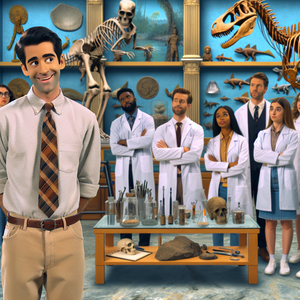Hollywood Heroes vs. Real Survival Experts: Could Schwarzenegger or Stallone Survive Nature’s Toughest Tests?

The survival feats of Schwarzenegger’s Dutch and Stallone’s Rambo are undeniably impressive on screen, but survival experts are quick to point out the discrepancies between Hollywood’s portrayal of survival and the realities of the wilderness. While both characters showcase grit, ingenuity, and physicality, surviving in nature is far more complex than what’s depicted in action-packed montages. Let’s break down their key survival moments and analyze them through the lens of real-world expertise.
Dutch’s Mud Tactic in Predator
One of Dutch’s most iconic survival moments in Predator is his decision to coat himself in mud to hide from the alien predator’s heat-detecting vision. It’s a clever move, but survival experts argue that the effectiveness of this tactic is questionable. While mud may temporarily mask body heat, it would eventually dry or wear off, exposing the body’s natural warmth once again. In a real-life scenario, this tactic might buy someone a few moments of concealment, but it wouldn’t be a foolproof strategy.
Rambo’s Improvised Traps in First Blood
Rambo’s ability to craft weapons and traps from his surroundings is another standout moment in Hollywood survival storytelling. From spiked pits to tripwires, his resourcefulness is unparalleled. While these feats are plausible with extensive training, survival experts emphasize that such skills require years of experience and practice. Improvising effective traps is not something that can be mastered on the fly, especially in the high-stress, life-or-death situations Rambo often finds himself in. In reality, creating such traps would require not only skill but also an in-depth understanding of the local environment and wildlife.
Schwarzenegger and Stallone: The Actors Behind the Heroes
Now that we’ve taken a closer look at their characters, what about the men behind the roles? Do Arnold Schwarzenegger and Sylvester Stallone have what it takes to survive in the wild? While neither is a trained survivalist, both actors possess qualities that could serve them well in a survival scenario.
Arnold Schwarzenegger: The Power of Discipline and Strength
Arnold Schwarzenegger’s physical prowess is legendary. As a bodybuilding icon and former Mr. Olympia, he has demonstrated unparalleled strength and endurance. In a survival context, this physicality could be an asset when it comes to physically demanding tasks like building shelters, carrying supplies, or traversing rough terrain. Additionally, Schwarzenegger’s stint in the Austrian Army during his youth may have equipped him with some basic survival and tactical skills, such as navigation and teamwork. His discipline, honed through years of grueling training, could also help him maintain focus and composure in challenging situations.
Sylvester Stallone: Grit and Determination
Sylvester Stallone is no stranger to adversity, both on and off screen. Known for his relentless determination, Stallone’s ability to push through physical and mental challenges is a key survival trait. For his roles, Stallone has often undergone intense training, learning practical skills like knife-handling and wilderness navigation. While these skills alone wouldn’t guarantee survival, his mental toughness and resourcefulness could help him overcome the psychological hurdles that often accompany life in the wild, such as isolation, fear, and exhaustion. Stallone’s underdog spirit, evident in both his personal life and his portrayal of Rambo, suggests a resilience that could serve him well in a survival scenario.
Key Survival Skills: How Would They Measure Up?
To survive in the wilderness, one needs more than just physical strength and determination. Real-world survival is a multifaceted challenge that requires technical skills, environmental knowledge, and mental fortitude. Let’s see how Schwarzenegger and Stallone might fare in four critical areas of survival: 1. **Shelter-Building**: A proper shelter is essential for protection from the elements. Schwarzenegger’s strength could make tasks like gathering large branches or heavy materials easier, but Stallone’s detail-oriented nature and Rambo-esque ingenuity might give him the edge in designing a functional, insulated shelter. Survival experts stress that shelter-building isn’t just about brute force—it requires an understanding of the environment and the ability to adapt quickly to available resources. 2. **Fire-Starting**: Fires provide warmth, safety, and a means to cook food. Hollywood often simplifies this process, portraying characters starting fires with a single match or a spark. In reality, fire-starting is a delicate skill that requires the right materials, such as dry tinder and kindling, as well as proper technique. Neither Dutch nor Rambo are shown engaging in realistic fire-building, which suggests that their real-life counterparts might struggle without prior training. 3. **Finding Food**: Hunting, foraging, and fishing are vital for long-term survival. While Dutch demonstrates some hunting prowess in Predator, real-world hunting requires patience, skill, and knowledge of local wildlife. Rambo’s ability to craft traps might give him an advantage here, but identifying safe-to-eat plants and avoiding toxic ones is a skill that neither actor is likely to have mastered. Survivalists warn that misidentifying plants is a common and often fatal mistake among novices. 4. **Mental Resilience**: Perhaps the most underrated survival skill is mental resilience. The wilderness can be isolating and unforgiving, testing an individual’s ability to stay calm, focused, and hopeful. Stallone’s grit and determination might give him an edge in enduring the psychological toll of survival, but Schwarzenegger’s disciplined mindset should not be underestimated. Both actors have demonstrated resilience in their personal lives, which could translate into survival success.
Hollywood Fantasy vs. Wilderness Reality
While Schwarzenegger and Stallone have portrayed some of the most iconic survivalists on the big screen, the realities of wilderness survival are far less glamorous. Survival experts agree that physical fitness and mental toughness are important, but they are only part of the equation. Practical skills, such as fire-starting, navigation, and foraging, are just as critical—and these are areas where even the most seasoned action heroes might fall short. That said, the appeal of characters like Dutch and Rambo lies not in their strict adherence to survival realism, but in their symbolic representation of human resilience and ingenuity. These characters inspire audiences to believe in the power of determination, creativity, and the will to overcome insurmountable odds.
In the end, surviving in the wild requires a combination of physical strength, mental resilience, environmental knowledge, and practical skills. While Schwarzenegger and Stallone bring impressive attributes to the table, neither would likely thrive in the wilderness without proper training and preparation. Nonetheless, their characters—Dutch and Rambo—remain enduring symbols of human perseverance and adaptability. Whether or not they could pass a real survival test, their stories continue to inspire us to face challenges with courage and determination. And perhaps that’s the true measure of survival: the ability to inspire hope, even in the face of impossible odds.
Wilderness Survival Instructor
Outdoor schools, adventure companies, and military training programs
Core Responsibilities
Teach individuals or groups critical survival skills, such as shelter-building, fire-starting, and foraging.
Design hands-on training programs for various environments (e.g., forest, desert, arctic).
Provide safety guidelines and emergency protocols for wilderness expeditions.
Required Skills
Expertise in navigation, survival gear usage, and outdoor first aid.
Certification in wilderness education (e.g., NOLS, Wilderness First Responder).
Survival Equipment Product Designer
Outdoor gear brands like Gerber Gear, REI, or Patagonia
Core Responsibilities
Develop innovative tools and materials for outdoor survival, such as portable shelters, fire-starting kits, or multi-purpose knives.
Conduct field testing to ensure product durability and functionality in extreme conditions.
Collaborate with engineers, survival experts, and marketing teams to refine designs.
Required Skills
Background in industrial or mechanical design.
Proficiency in CAD software and materials engineering.
Knowledge of real-world survival challenges to design practical solutions.
Search and Rescue Specialist
Government agencies (e.g., National Park Service), fire departments, and private rescue teams
Core Responsibilities
Locate and rescue individuals in wilderness or disaster scenarios using advanced techniques and tools.
Provide medical aid and safely transport individuals to secure locations.
Train in survival scenarios to operate effectively under high-stress conditions.
Required Skills
Expertise in navigation (GPS, topographic maps), rope rescues, and emergency medical care.
Physical fitness and certifications like EMT, wilderness first aid, or SARTECH.
Outdoor Expedition Guide
Adventure tourism companies, eco-travel organizations, and national parks
Core Responsibilities
Lead clients on multi-day survival treks, ensuring safety and skill-building.
Plan routes, assess environmental risks, and teach basic survival techniques during expeditions.
Educate participants on local ecosystems and wildlife.
Required Skills
Extensive outdoor experience, including navigation, first aid, and risk management.
Strong communication and leadership abilities to guide diverse groups.
Military Survival, Evasion, Resistance, and Escape (SERE) Specialist
Armed forces, private defense contractors, and government agencies
Core Responsibilities
Train military personnel in survival techniques for evading capture and enduring extreme conditions.
Instruct on topics such as camouflage, stealth movement, and psychological resilience.
Simulate high-stress survival scenarios to prepare trainees for real-world threats.
Required Skills
Military background with specialization in survival training.
Expertise in hand-to-hand combat, navigation, and survival psychology.


